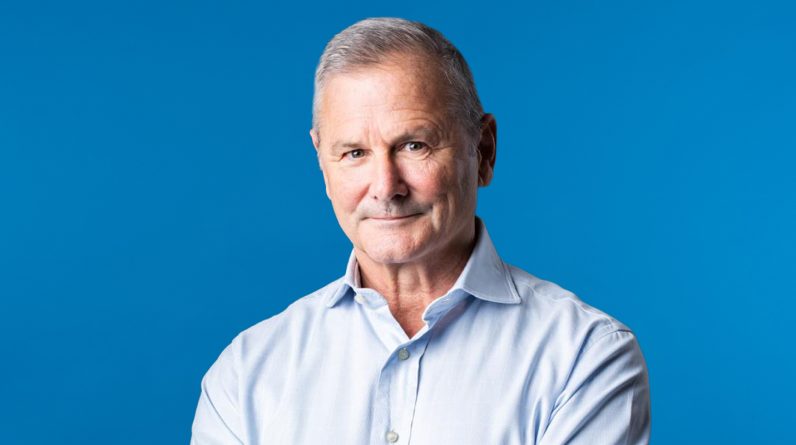(ANALYSIS) Imagine a world where AI is omnipresent. It occupies your home, your car, your workplace, your pocket. Even your mind. Every aspect of your daily routine is seamlessly integrated with this sophisticated technology.
It anticipates your needs, completes your thoughts, deciphers your emotions, plays your favorite songs, drafts your emails and even suggests your next meal. It serves as your personal assistant, confidant, entertainment hub and your lover. Life becomes smooth, convenient and tailored to your every whim.
But something crucial is missing. A sense of unease begins to take root. Interactions feel hollow, conversations lack depth and relationships become superficial and transactional. The more we rely on AI, the more we find ourselves yearning for something it cannot provide: authenticity, meaning and opportunities to connect on a fundamentally human level.
READ: The Moral And Ethical Challenges Posed By Artificial Intelligence
This is where the church reenters the scene, not as a relic of the past, but as a symbol of the present, a sanctuary of authenticity. At this tipping point of artificiality and superficiality, people start craving transcendent values that algorithms cannot encode. They seek the warmth of human connection, the comfort of shared beliefs and the solace of timeless rituals.
Imagine a young professional, immersed in the digital hum of a bustling city, surrounded by a sea of screens and synthetic voices. It’s not difficult to imagine, of course, that this is the reality for millions of people around the world from New York City to New Delhi.
Despite the convenience of their AI-enhanced lives, they find themselves restless at night, staring at the ceiling (or the phone), pondering the bigger questions: Why am I here? What is my purpose? What does it mean to be truly connected? These are questions no AI-generated bot can satisfactorily answer. Why? Simply because such questions delve into the depths of the human soul. And AI doesn’t have a soul. Not yet, anyway.
Gradually, this professional notices a shift among their peers. A friend mentions attending a Sunday service not for the sermon but for the sense of community, the genuine smiles and the feeling of belonging. Another friend speaks about the meditative peace they find in the quiet of a church, away from the relentless pace of technology. Intrigued, our professional decides to explore.
Walking into the church, they notice that people are present, genuinely engaged and open-hearted. There is a tangible sense of something greater than oneself, something that transcends the algorithmic curation they have become accustomed to. The hymns, the prayers, the very atmosphere speak to a part of the human experience that technology cannot touch: the spiritual.
In the dim light of the stained-glass windows, our young professional feels a profound sense of peace. It’s not about rejecting technology but about finding balance.They realize that while AI can enhance life, it should not define it.
As more people reach this tipping point, the church starts to see a resurgence. It becomes a counterbalance to digital dominance, a place where people can reconnect with their humanity. It’s not about nostalgia or clinging to the past; it’s about rediscovering the value of the sacred and the communal in a world that increasingly feels like a digital illusion.
These scenarios — where AI inadvertently leads people back to religious spaces — are not as far-fetched as they might seem at first glance.
Throughout history, humans have sought meaning, connection, and understanding beyond the immediate physical world. This quest has been intrinsic to our nature, deeply embedded in our collective psyche since the Middle Paleolithic era. From ancient cave paintings to complex religious systems, this spiritual inclination has been a constant, an ever-present phenomenon throughout our journey.
Religious belief, in its many forms, has always provided answers to the big questions — questions about existence, purpose, morality and the afterlife. These are not just abstract concepts; they are core to what makes us human. The rituals, stories and communal gatherings found in religious practice offer a framework for understanding our place in the universe, a sense of belonging, and a connection to something greater than ourselves.
Now, enter the age of AI. Modern technology is rapidly transforming our world. It’s infiltrating every aspect of our lives. Algorithms, data analytics and machine learning models dictate what we see, how we interact and even how we think. While these innovations bring unparalleled levels of convenience and efficiency, they also introduce a sense of literal artificiality. The digital world, no matter how advanced, lacks the nutrients provided by real-life experiences.
In such a context, it is only natural for people to seek balance. When faced with the sterile precision of AI, the messiness of human life — its unpredictability, its emotional depth, its sheer rawness — becomes even more precious.
Of course, sports clubs, book clubs and other social gatherings undoubtedly foster community and camaraderie around shared interests. However, they differ significantly from religious institutions like churches, mosques and synagogues in terms of spiritual nourishment. Religious centers can serve as focal points for believers, nonbelievers and everyone in between — those seeking answers to existential questions and a deeper connection to the divine. Through rituals, prayers and sacred texts, these institutions provide a framework for understanding life’s purpose, morality and the metaphysical, offering a sense of transcendence and spiritual upliftment that secular clubs generally do not replicate.
Moreover, religious communities offer a unique sense of belonging and support that extends well beyond social interaction. They create sacred spaces conducive to contemplation and meditation, an opportunity for individuals to connect with the divine. Religious institutions also offer a counterbalance to the isolation that can come from overreliance on technology.
In times of crisis or existential doubt, people have, throughout history, turned to these communities for support, wisdom and solace. A return to religious spaces should not be considered a step backward. On the contrary, it could help us reclaim a crucial aspect of human life that technology cannot replicate.
In the words of the great philosopher Blaise Pascal, “There is a God-shaped vacuum in the heart of each man, which cannot be satisfied by any created thing but only by God the Creator.”
This profound insight speaks to the core of our human experience. The hunger for something profound in nature — an itch that cannot be scratched by AI girlfriends, VR headsets, and promises of the Metaverse — remains ever-present. We are, at our core, God-seeking souls, and no algorithm can fulfill that eternal quest.






